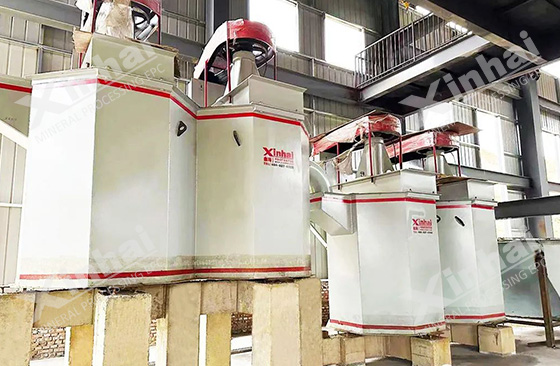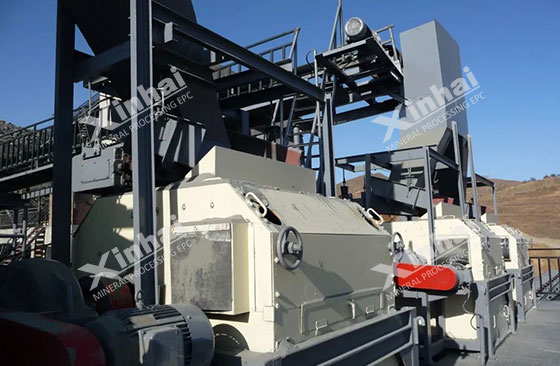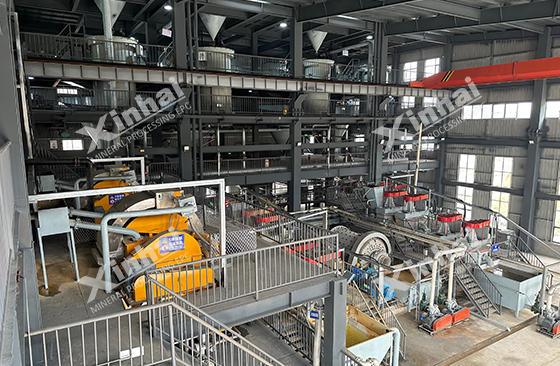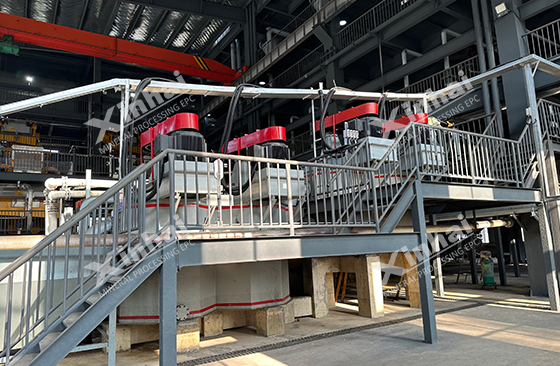
Quartz sand, as a key non-metallic mineral, is widely used in many industrial fields due to its excellent physical and chemical properties. However, in order to meet the high standards of purity of quartz products in different industries, the raw ore containing impurities must be beneficiated and purified. In each beneficiation stage, multiple factors need to be considered comprehensively to ensure that the quartz sand concentrate reaches the expected quality.

Scrubbing and classification desludging is a process of removing impurity minerals such as film iron, bonding and soil on the surface of quartz sand by mechanical force and the abrasive force between sand particles, and further rubbing the unformed mineral aggregates, and then further purifying the quartz sand through classification operations. Factors affecting the scrubbing and desludging effect include the particle size of quartz sand, the type and content of impurity minerals in the original ore, the structural characteristics of the scrubbing machine, the scrubbing time and the scrubbing concentration. As the quartz particle size becomes finer, the grade of SiO2 decreases, while the content of iron and aluminum impurities increases, which is particularly obvious in quartz sand containing a large amount of clay minerals. However, for removing the film iron and adhesive impurity minerals on the surface of quartz, scrubbing and classification desludging often use spiral scrubbers, drum screens, hydrocyclones, desludging buckets and hydraulic classifiers and other equipment for scrubbing and classification desludging to improve the treatment effect.

Research shows that the scrubbing concentration between 50% and 60% is ideal. The scrubbing time should be based on the product quality requirements to avoid excessive scrubbing that causes equipment wear and increased energy consumption. For quartz sand that does not have an ideal mechanical scrubbing effect, rod scrubbing is a mature solution.

The magnetic separation process of quartz sand is designed to remove magnetic impurity minerals such as hematite and limonite, thereby reducing the iron content and improving its use value and product quality. Factors that affect the magnetic separation effect include the number of magnetic separations, magnetic field strength and quartz sand particle size. As the number of magnetic separations increases, the iron content gradually decreases; most of the iron can be removed under a certain magnetic field intensity, but even if the magnetic field intensity increases a lot thereafter, the iron removal rate will not change significantly. In addition, because the amount of iron-containing impurity minerals in fine-grained quartz sand is high, the finer the quartz sand particle size, the better the iron removal effect.
The flotation method is to remove non-magnetic associated impurity minerals such as feldspar and mica from quartz sand. The properties of raw ore and the selection and dosage of chemicals affect the flotation effect of quartz sand. In the fluorine flotation process, cationic collectors and hydrofluoric acid activators are used. Although the flotation effect is remarkable, fluorine-containing wastewater that is harmful to the environment will be produced and needs to be treated before being discharged. Fluorine-free flotation utilizes the structural differences between quartz and feldspar, rationally mixes anionic and cationic mixed collectors, and uses their different Zeta potentials to preferentially float out feldspar to achieve effective separation. It is a more environmentally friendly purification method. . After scrubbing, desliming, magnetic separation and flotation, the purity of quartz sand can reach 99.3%-99.9%, which can basically meet the needs of industrial sand.

Acid leaching is a process to further purify quartz sand by taking advantage of the fact that quartz is insoluble in acid (except HF) and other impurity minerals can be dissolved by acid. Its effect is affected by the type, concentration, acid leaching time, temperature and slurry stirring of the acid. Different acids have different removal effects on different metal impurities. Using nitric acid alone for pickling, the iron removal rate is very low; the removal rate of dibasic acid (hydrochloric acid + hydrofluoric acid) is 58.1%, and the removal rate of ternary mixed acid can reach 67.7%. The synergistic effect of mixed acid pickling significantly improves the impurity removal efficiency, but the HF concentration generally needs to be controlled not to exceed 10% to avoid quartz dissolution. Dilute acid has a significant removal effect on Fe and Al, while concentrated sulfuric acid, aqua regia or HF has a better removal effect on Ti and Cr. Using mixed acids such as sulfuric acid, hydrochloric acid, nitric acid and hydrofluoric acid for acid leaching removal can significantly improve the purity of quartz sand. Increasing temperature will accelerate the reaction rate and iron removal rate, but the effect tends to weaken as the temperature increases. Therefore, in the acid leaching process, the concentration, temperature and dosage of acid should be reduced as much as possible, and the acid leaching time should be reduced to achieve efficient purification at lower mineral processing costs.

Quartz sand beneficiation and purification is a systematic project, involving multiple stages such as scrubbing, graded desludging, magnetic separation, flotation and acid leaching. The effect of each stage is affected by many factors, including the nature of the original ore, process parameters, equipment configuration, reagent system, etc. By comprehensively considering these factors, the purification process can be optimized, the purity of quartz sand can be improved, and the high standards of different industrial applications can be met, thereby improving the economic benefits of the beneficiation plant.
To find out more about our products and solutions, please fill out the form below and one of our experts will get back to you shortly.